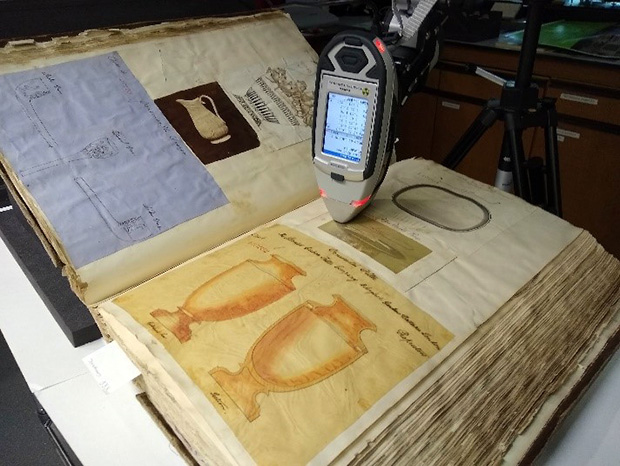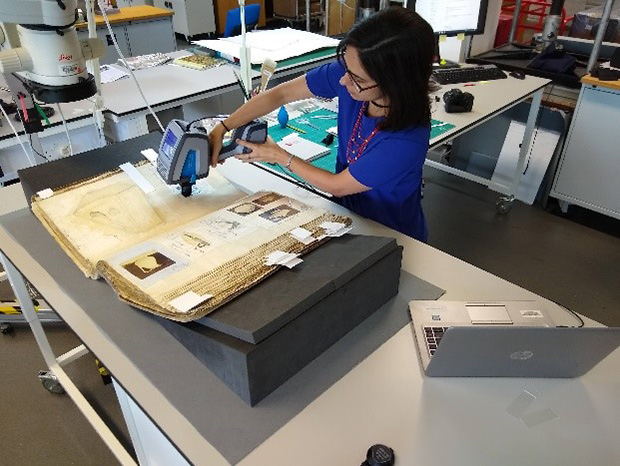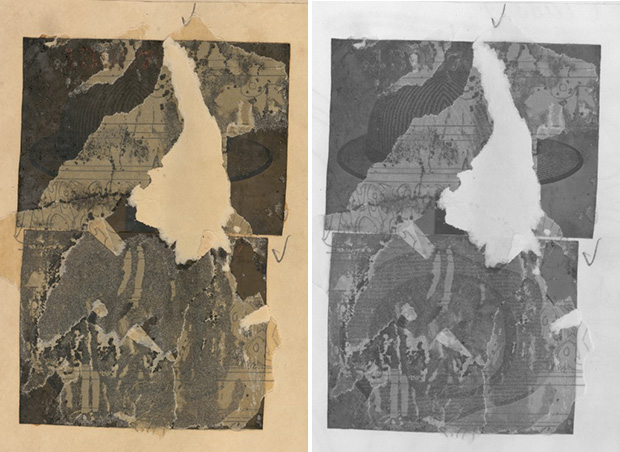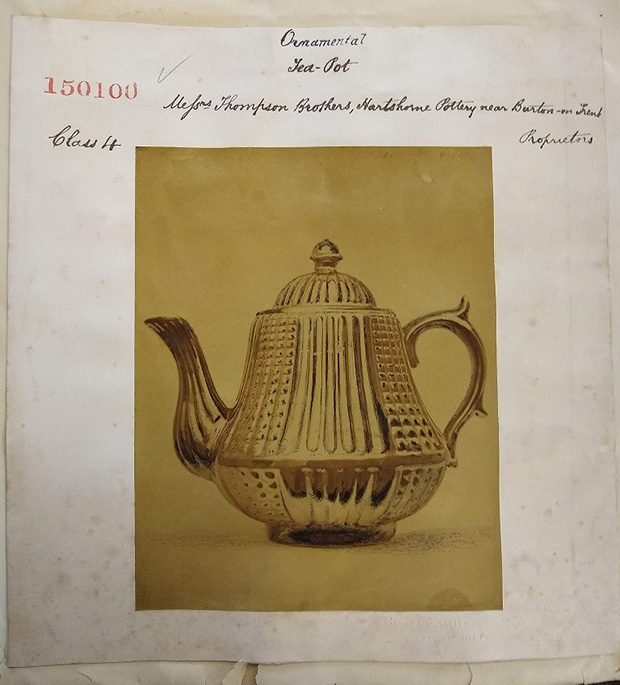In our previous blog, we talked about finding rare historic photographic processes in one of the Designs Registers volumes. This rare find in The National Archives’ collection presents an exciting opportunity to research the creation of this type of photograph, and will inform the decision making for the conservation of the prints affected by stuck paper. Potentially it will also enhance our understanding of historic photographic practices, helping us to preserve similar photographs in archives and collections.
Research and analysis
Working closely with the scientific team in the Collection Care department, we performed analysis to identify the composition of the materials that these photographs are made of. Elemental analysis was done with X-Ray fluorescence spectroscopy (XRF) and showed the presence of silver, which confirms the photographic nature of the image. Lead was also detected and seems related to the manufacturing of the cloth support. Fourier transform infra-red spectroscopy (FTIR) analysis identified collodion, which is another clue of the pannotype process, and a natural resin on the surface of the majority of the photographs.

X-ray fluorescence spectroscopy (XRF) analysis on an albumen print
We combined this analysis with a literature review of historic photographic journals and manuals, to find information about the recipes. Based on this, the natural resin is likely to be shellac or amber, which were both used as coating materials for collodion processes. It is suspected that the natural resin is responsible for the image surface of these photographs sticking on the designs or paper of the opposite page.

Fourier transform infra-red (FTIR) analysis on a pannotype print
Finally, the newly acquired Multispectral Imaging system (MSI) was also used to enhance the visibility of the images on the pannotypes whose surfaces were covered by stuck pieces of paper.

Catalogue reference: BT 43/67/130678, true colour image (left) and infrared reflected (IRR) image (right) captured with multispectral imaging system (MSI)
Next steps
The scientific analysis helped us to determine the materials used on the photographs and how they might have reacted with adjacent designs and items. Treatment options are currently being tested to remove the pieces of paper that are stuck on the photographs’ surface. A future blog will outline the treatment outcomes.

Catalogue reference: BT 43/67/150100, hand-coloured albumen print of a tea pot
It is highly likely that more pannotypes exist in other volumes of the Design Registers, especially those of the same period. In a first phase of this research project, it will be exciting to find these further examples and compare them with the photographs that have already been analysed. It is fundamental to assess their condition and whether they present similar conservation problems.
A future project to survey, record, assess, and identify as many photographs as possible in the Design Registers volumes is under consideration. As the act to initiate the design registers in 1839 coincides with the invention of photography, these volumes will be a valuable source of information about the history of the evolution of photographic practice in Britain.